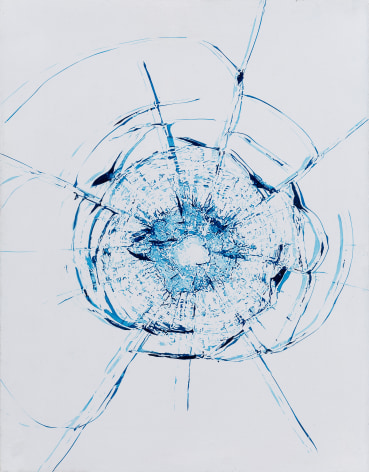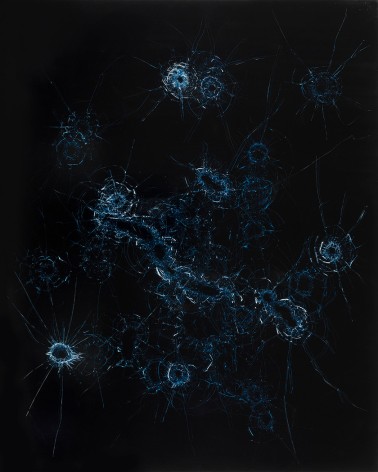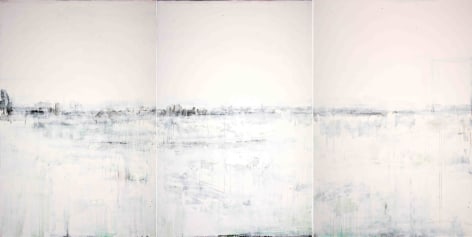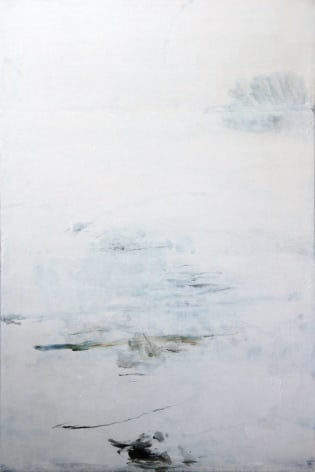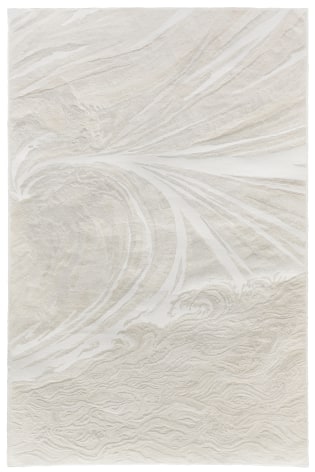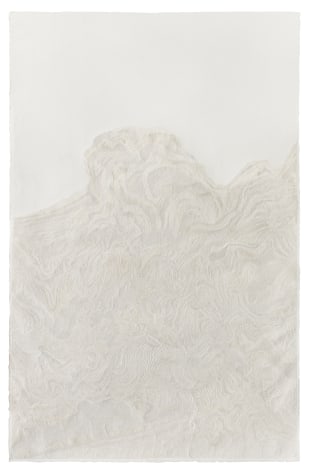Chambers Fine Art is pleased to present at Art Basel Hong Kong 2016 new works by Yan Shanchun, Fu Xiaotong and Zhao Zhao. Widely different in background and approach, the three artists are representative of the stylistic diversity of contemporary Chinese art today.
The centerpiece of the exhibition is Fu Xiaotong’s monumental installation Fierce Gale, the largest and most ambitious project of the artist’s young career. Consisting of twelve large (250 x 160 cm) sheets of hand-made Xuan paper displayed side by side in the style of hanging scrolls, Fu Xiaotong creates clouds, oceans and mountains through her obsessive technique which involves pricking the paper with a needle hundreds of thousands of times. The twelve works which make up the installation are inspired by the ancient Chinese cloud design known as Yun Qi Wen (云气纹) and each conveys a powerful dynamism that unites the separate components. This design which has evolved over many thousands of years from the Neolithic period to the Ming and Qing dynasties is an expression of the intangible energy or spirit that permeates everything in the cosmos.
Fu Xiaotong was born in Shanxi in 1976 and studied at the Tianjin Academy of Fine Arts and the China Central Academy of Fine Arts, Beijing (CAFA). It was in Beijing that she developed a strong affinity for handmade Xuan paper that has been used in China since the Tang Dynasty (618 -907). Refusing to mask the surface of the paper with pigment, she chooses to excavate its surface with a needle, carefully controlling the direction of the millions of perforations in order to achieve the desired visual effects.
Yan Shanchun has found an inexhaustible subject for his paintings in the celebrated West Lake in Hangzhou, a source of inspiration to painters and poets for hundreds of years. In the paintings from 2008-2009 included in the exhibition at Art Basel Hong Kong, glimpses of the lake and its surroundings can be seen through multiple layers of pigment which range from thin washes to thicker applications applied with a palette knife. This subtle approach yields spectacular results in the large triptych Su Causeway, in which the narrow path bisects each of the three panels, dividing them into subtly differentiated zones representing sky and water. As in certain works by Cy Twombly, the pale, scuffed surfaces allude to a surprisingly wide range of cultural and historical themes.
The imagery of West Lake also permeates the new series of 40 copper plate etchings which have become the primary focus of the artist’s attention in the last three years. Using a mixture of sulfur and olive oil to etch the plates, Yan creates prints that he describes as having “a luminous, silver-print photography effect, lending the image a heavy, metallic feel similar to how I feel about the West Lake: clear, remote, tempered and classic.”
Yan Shanchun was born in 1957 in Hangzhou. After graduating from the Printmaking Department of Zhejiang Academy of Finer Arts in 1982, he turned to ink painting for a number of years before devoting most of his time to scholarly pursuits, only returning to painting just over a decade ago.
The third section of the exhibition is devoted to a new group of paintings from Zhao Zhao’s highly celebrated “Constellation” series. Inspired by a serious motor accident in 2009 in which his head cracked the car’s windshield, Zhao Zhao has utilized the resulting spider-web pattern in a succession of related sculptures, installations and paintings. In these newest paintings that are suggestive of stellar configurations as well as the movements of primitive life-forms in the ocean, Zhao Zhao transforms the violence of the original incident through the finesse of his painterly technique. With the delicacy of a miniaturist, he creates startlingly beautiful images from traumatic source material.
Zhao Zhao was born in Shihezi, Xinjiang in 1982 and graduated from the Xinjiang Institute of Arts. Moving to Beijing shortly after, he began assisting Ai Weiwei in the production of videos, an experience that was to have a major effect on his own development. Zhao Zhao’s first mature works were primarily conceptual in nature and object-based but he never lost his taste for painting, producing works that were noteworthy for their stylistic diversity and astringent humor.

